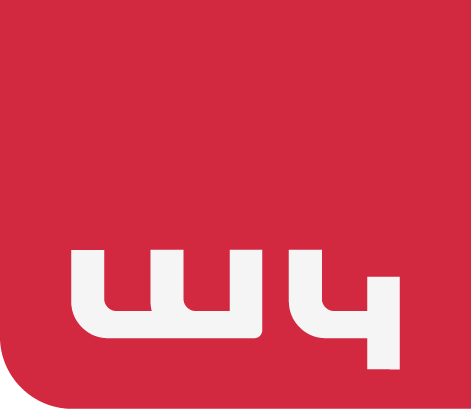What kind of car do you drive? Do you change to a new model immediately after a new one is out or do you drive your old junker for a few years and have it serviced regularly? Well, most people will probably choose the second option. You don't necessarily have to change to the latest model if you are satisfied with its performance. It is pretty much the same as the content management systems (CMS) you are using.
In the past, many companies used to commission a relaunch of their website every five years. By then, technology and design were usually so outdated that it was cheaper to redo everything. But the times have changed. These days companies will rarely invest in a complete relaunch.
Websites have become more durable, more functional, bigger, and also more intelligent. Once you have invested a lot of money in setting up a sophisticated CMS, you don't even need a relaunch. It is enough to update your CMS on a regular basis.
What are the advantages of content management system updates?
1. Security
The primary reason for updates is security. Software providers, including those for open-source systems, regularly release updates to address security gaps. Both hackers and bots are becoming increasingly sophisticated, making it crucial that your CMS—the core of your website and often linked to other systems—remains secure. No company wants to be hacked, and the GDPR requires the secure management of customer data.
Security gaps can emerge for various reasons. Sometimes, they result from cumulative errors made by generations of coders, often unconsciously. Other times, they stem from the latest developments in software, as technology is constantly evolving. Content management systems are frequently connected to other systems through Application Programming Interfaces (APIs). If these APIs are outdated, they can become incompatible, leading to security vulnerabilities.
Many security gaps result from incompatibility between outdated CMS versions and the latest server technologies. Hosting providers are required to offer the latest PHP versions to ensure security. If you manage your website with an outdated CMS, you might face issues because the hoster may disable support for older versions of PHP or only keep them available for an additional fee. This makes it crucial to keep your CMS updated to avoid these incompatibilities and ensure robust security.
2. A Fast and Performing Website
Returning to our car metaphor: if you maintain your car, it will experience fewer breakdowns and run more smoothly after each inspection. The same applies to your CMS. Newer CMS versions often come with performance optimizations that result in faster loading times. This leads to a quicker, more responsive website, enhancing user engagement and satisfaction.
CMS systems continuously evolve, becoming better and easier to use. New versions often include extensions as separate, system-optimized features. A CMS isn't a project with a fixed start and end; it's a product that thrives on continuous development. Investing time and money to keep it up-to-date is essential.
Maintaining a website is usually far less expensive than developing one from scratch. Companies must find a balance: if you miss several key updates, maintenance costs can skyrocket to the point where a complete relaunch might be just as costly. Therefore, regular updates are crucial to keep your CMS efficient and cost-effective.
3. Improved Functionality
Updates often introduce new tools and capabilities that enhance the overall functionality of your website. These features can range from improved content editing tools to more advanced media handling capabilities. For example, an update might include new SEO tools, better integration with social media platforms, or enhanced e-commerce functionalities. These additions allow you to keep up with the latest trends and technological advancements, ensuring your website remains competitive and capable of meeting the evolving needs of your users.
4. Improved Usability
Modern CMS interfaces are typically designed with usability in mind, making them more intuitive and user-friendly. Updates can simplify complex tasks, making it easier for administrators and content creators to manage the website. This can include streamlined workflows, drag-and-drop functionalities, and more intuitive navigation menus. Improved usability reduces the learning curve for new users, increases productivity, and minimizes the likelihood of errors. It ensures that your team can work more efficiently, focusing on creating and managing content rather than struggling with outdated or cumbersome interfaces.
5. Improved Search Engine Optimization (SEO)

CMS updates often include improvements that make it easier for search engines to crawl and index your website. These updates might enhance the website's structure, making it more search-engine-friendly. For example, updates can improve the generation of XML sitemaps, ensuring that all pages are correctly identified and indexed by search engines. They might also optimize the website's code and reduce loading times, both of which are factors that search engines consider when crawling a site. Better indexing ensures that your content is accurately represented in search engine results, increasing the likelihood that users will find your site when searching for relevant keywords.
Regularly updating your CMS ensures that you are leveraging the latest advancements in Search Engine Optimization (SEO) technology and practices. This not only helps improve your website's visibility and accessibility but also ensures that you remain compliant with the ever-evolving algorithms used by search engines. By maintaining a well-optimized and up-to-date CMS, you can achieve better indexing and improved rankings, ultimately driving more traffic to your site and enhancing your online presence.
5. Regular CMS updates are cost-efficient

Regular updates can help avoid the need for costly website redesigns. When a CMS is frequently updated, it stays aligned with the latest technological standards, security protocols, and user expectations. This continuous improvement means that your website can adapt incrementally to changes, rather than requiring a complete and expensive overhaul after falling significantly behind. Updates can include small but essential changes that keep your website looking modern, functioning smoothly, and meeting current web standards. By investing in regular updates, you spread out the costs over time and avoid the substantial financial burden of a major redesign, which often involves extensive development, design, and testing efforts.
Conclusion: Keep Your CMS Updated for Optimal Performance
In conclusion, updating your CMS is crucial for maintaining the security, functionality, SEO, cost-efficiency, and overall performance of your website. Regular updates not only protect your site from potential threats but also ensure that it remains competitive, user-friendly, and aligned with the latest technological advancements. By keeping your CMS up-to-date, you can provide a better experience for your users, save on long-term costs, and enhance your website's visibility and engagement.
Don't wait until issues arise—proactively maintain your CMS to stay ahead of the curve. For expert assistance with your CMS updates and website maintenance, contact W4 today. Our team of professionals is here to ensure your website runs smoothly and efficiently, helping you achieve your business goals with confidence.




-1.webp)




.jpg)


